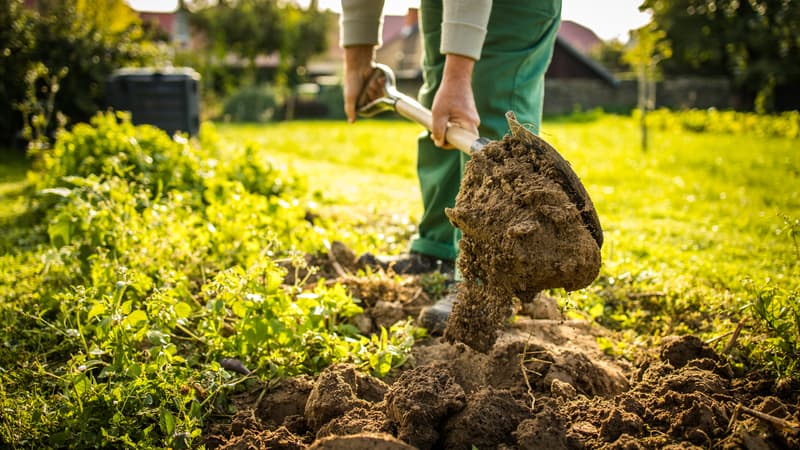That blast of humid, hot August air still hits you as soon as you leave the icy air-conditioning of the indoors. But the fall décor aisles of the craft store (and the pumpkin spice-flavored EVERYTHING) remind us that cooler temps are just around the corner. Although working in the garden still feels like working in a sauna, it’s not too late to look at how to prepare your garden for fall.
Even before the leaves begin to change color, there are many things you can do to prepare your garden for autumn and the coming changes in weather.
1. Remove weeds.
Although many gardeners start out enthusiastically keeping their rows weed-free and tidy, it’s easy to lose motivation to pull weeds as the season progresses. Although it may be tempting to leave weeds to – hopefully – die off after the season ends, you’re giving these pesky plants an opportunity to regenerate themselves by dropping seeds, which will likely make an appearance next year.
2. Begin clean-up.
Some plants – like cucumbers, squash, or zucchini – may produce heavily for a short while, then begin to dry up. These plants are especially susceptible to bugs like squash bugs and squash vine borers. These pests, which resemble “stink bugs,” tend to lay eggs and show up in or even over-winter in the dead and decaying leaves of the plants they destroy. Removing dead plant matter may remove their comfortable winter hiding spot and leave them searching for another spot – hopefully far away from your garden. If plant matter is diseased, decayed, or littered with squash bug eggs or squash bug nymphs, consider burning it – do not compost it back into your garden.
3. Test your soil.
Although this may seem like an activity for the spring, it’s actually a great way to prepare your garden for fall. Getting a head start on improving the quality of your soil is never a bad thing, especially if you have noticed specific issues in your plants or crop. For example, if you see blossom end rot (a rotten or water-logged spot on the end of a tomato where it has blossomed from the plant), your soil may not have enough calcium.
Only adding calcium may not be the “fix” – there may be other issues causing the soil to not absorb the calcium, such as high or low soil pH, or improper nitrogen levels. Contact your local extension office for more information on how to test your soil. The results of this test will help reveal what components of your soil may need to be adjusted.
4. Trim perennial plants.
Although many spring plantings are annuals, you may have perennial plants that can survive your area’s winter temperatures and conditions. Herb gardens have many plants such as rosemary, chives, and thyme that will benefit from a trim before winter hits. Protect perennial plants when necessary with mulch or straw.
5. Prepare your garden for fall with compost.
Time to put all of that summer compost to good use! Cover your garden rows – especially problem areas – with the year’s compost material; whether it’s fruit and veggie scraps, or the by-products of your chickens, rabbits, or goats. Testing your soil will give you a better idea of where problem areas are.
6. Plant winter vegetables or a cover crop.
Although some gardeners choose to take the winter off, some use the winter months to plant a winter crop that will survive most cold temperatures and frost. Kale, spinach, and some pea varieties are a few of my favorites that are cold-hardy plants.
Cover crops will protect your soil from winter elements and add nutrients to your soil. Check with your local extension office to find what cover crops are most suitable for your area and circumstances, as well as when to plant them based on your growing zone.
7. Clean and organize
Whether you have a tool shed, a greenhouse, or a corner of your garage, prepare that area for next year. Rinse, dry, and stack empty pots. Gather gardening tools – both long-handled tools such as rakes and hoes and those easy-to-lose hand tools (such as hand trowels or spades) and clean well before storing for next year. Store any seed packets in a cool, dry area indoors where they will not be exposed to moisture, the elements, or vermin.
8. Plan next year’s garden.
If you wait until next spring, the memories of failed plants may be long faded. Note what worked and what did not, so that you don’t repeat this year’s mistakes next year. Keeping a journal throughout the growing season will be an easy way of keeping track. This is especially helpful for large gardens with multiple cultivars of plants which may be harder to keep up with.
It’s not too late to get a jump on the fall – even while still enjoying this summer’s crops. And remember – everything you get done now will be one less thing to complete while you could be enjoying the crispness of sweater weather!

